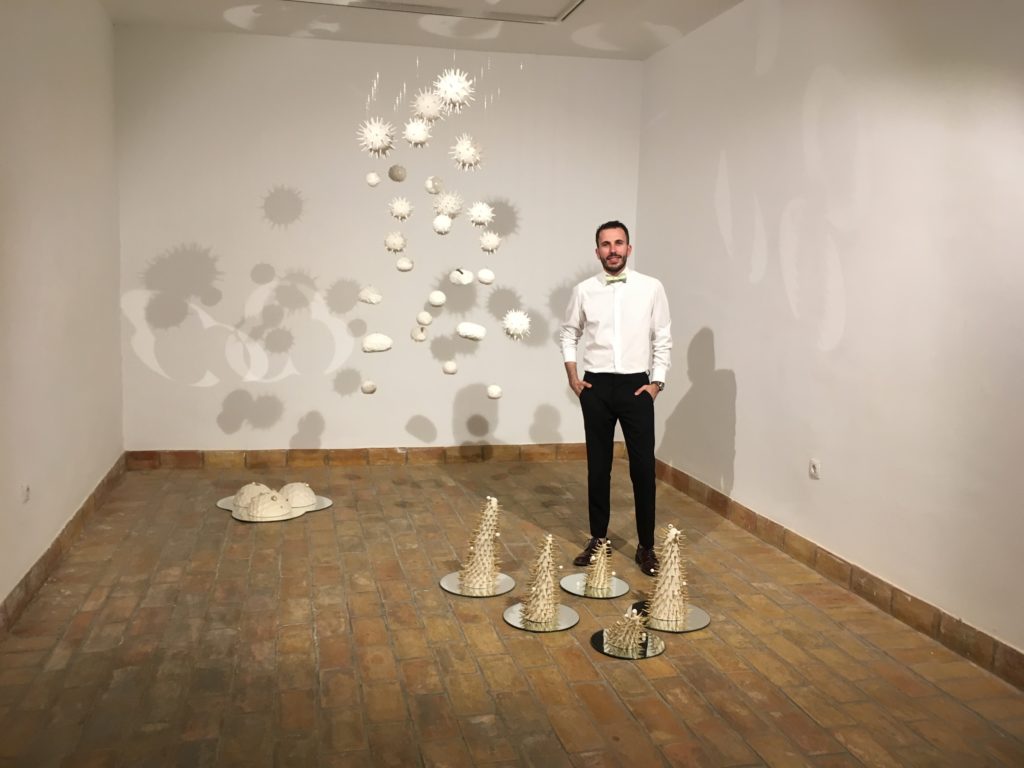La presente obra se realizó ex profeso para la exposición colectiva Páginas de Barro en Casa Góngora, Córdoba, comisariada por Hisae Yanase, con la temática «Tierra viva» en junio de 2019.
This work was made expressly for the collective exhibition «Páginas de Barro» in Casa Góngora, Córdoba, curated by Hisae Yanase, with the theme «Living Earth» in June 2019.
Se trata de una instalación escultórica hecha en cerámica como material principal, y que representa el proceso de polinización abiótica como visto por un microscopio.
It is a sculptural installation made of ceramic as the main material, which represents the abiotic pollination process as seen through a microscope.
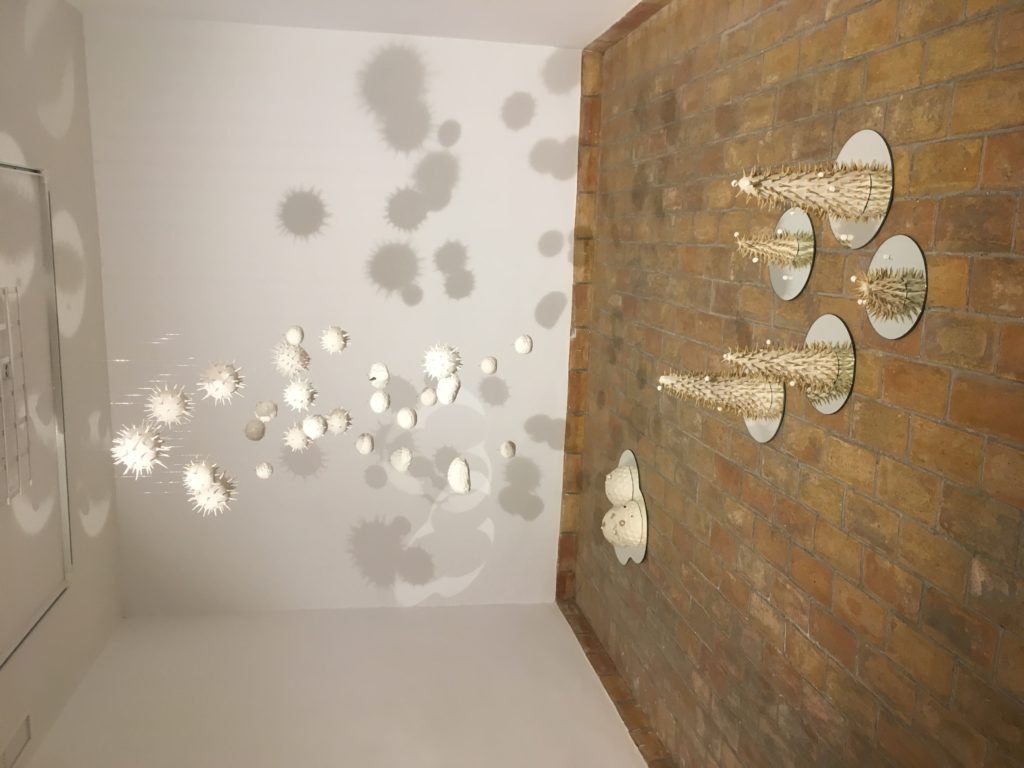
La polinización es el proceso fundamental que permite que las plantas se reproduzcan y, por tanto, se considera que encaja perfectamente en el concepto de que la tierra está viva. Además, es un proceso físico cuyos elementos protagonistas (los granos de polen) son prácticamente invisibles al ojo humano, o son tan pequeños que no se aprecian sus formas, colores, etc. Sin embargo, que mediante la visión en microscopio, tienen unas formas y colores tan variadas como bellas.
Pollination is the fundamental process that allows plants to reproduce and is therefore considered to be a perfect fit for the concept that the earth is alive. In addition, it is a physical process whose main elements (pollen grains) are practically invisible to the human eye, or are so small that their shapes, colors, etc. are not appreciated. However, through microscope vision, they have shapes and colors as varied as they are beautiful.
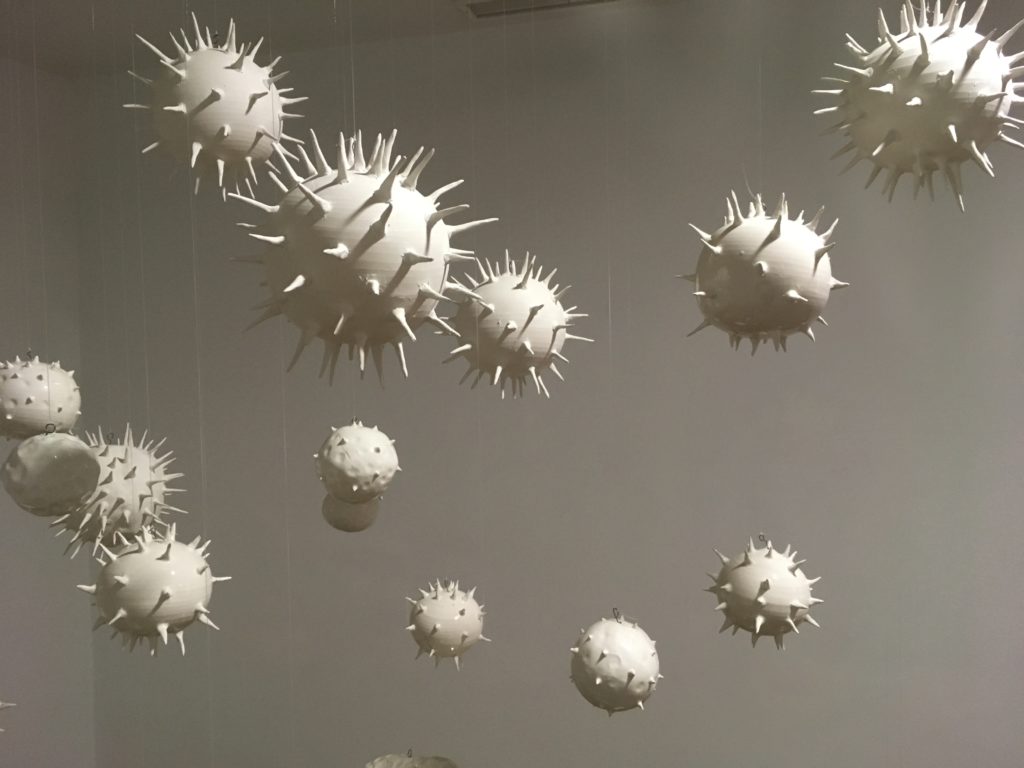
La polinización puede llevarse a cabo de dos formas: biótica (mediante animales como insectos o aves) y abiótica (mediante agua o viento). En esta obra, como se pretende dar protagonismo al polen, se optará por la representación artística en cerámica de un proceso de polinización abiótica, donde se pretende que el visitante se sienta como reducido –o su entorno ampliado- de manera que pueda caminar entre granos de polen en pleno proceso de reproducción de una planta.
Pollination can be carried out in two ways: biotic (by animals such as insects or birds) and abiotic (by water or wind). In this work, as it is intended to give prominence to pollen, I opted for the artistic representation in ceramic of an abiotic pollination process, where it is intended that the visitors feel reduced -or their environment expanded- so that they can walk among grains of pollen in the process of reproduction of a plant.
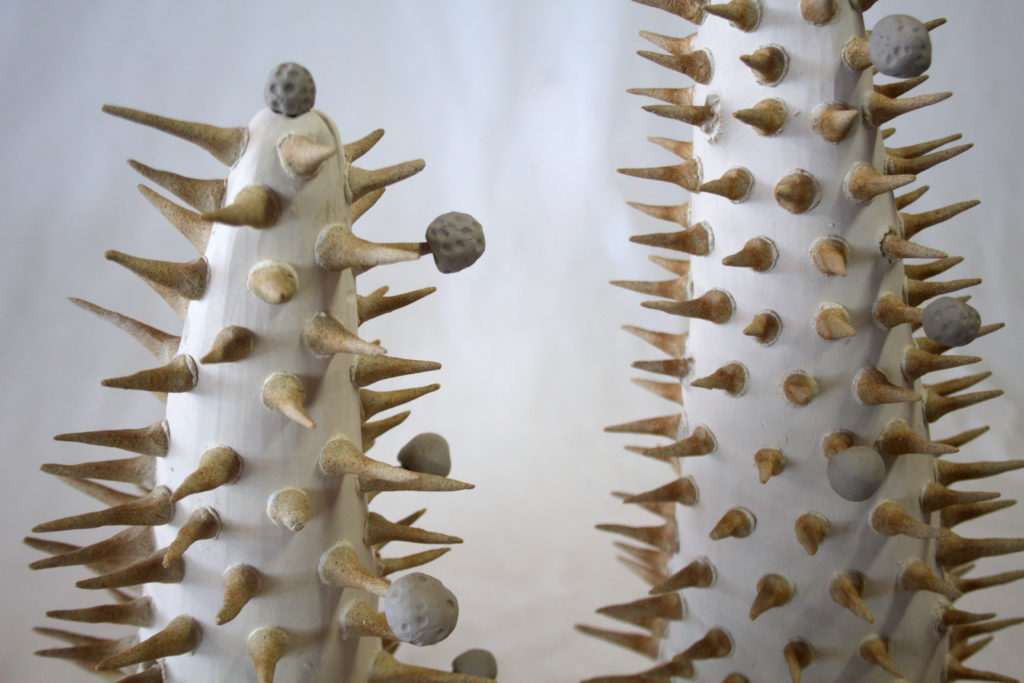
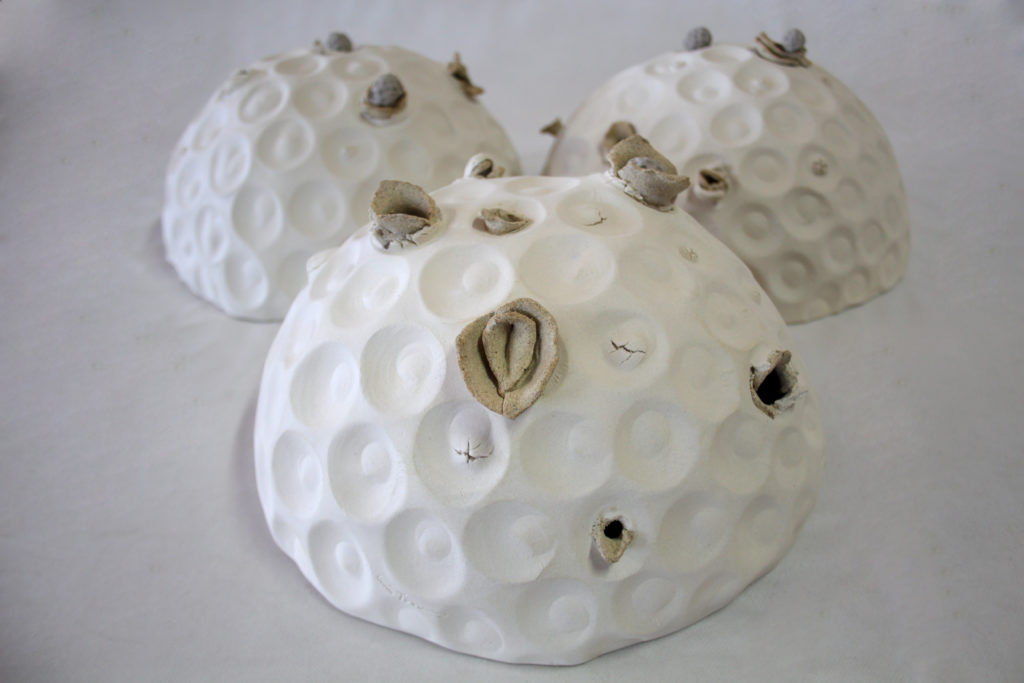
La instalación se compone de piezas escultóricas modeladas en cerámica con distintas texturas que se disponen en el espacio siguiendo la lógica del proceso de polinización. A un lado, las piezas más fálicas, alargadas, representativas de los estilos, la parte de la flor que produce y emite el polen. A continuación, se dispone una nube de piezas más pequeñas de distintas formas redondeadas y texturas que representan a los granos de polen volando hasta el estigma. El estigma está representado por piezas de distinta forma y mayor tamaño al otro extremo de la sala, a donde va a parar la nube de polen.
The installation is composed of sculptural pieces modeled in ceramic with different textures that are arranged in the space following the logic of the pollination process. On one side, the most phallic, elongated pieces, representative of the styles, the part of the flower that produces and emits pollen. Next, a cloud of smaller pieces of different rounded shapes and textures is arranged representing the pollen grains flying up to the stigma. The stigma is represented by pieces of different shapes and sizes at the other end of the room, where the pollen cloud ends up.
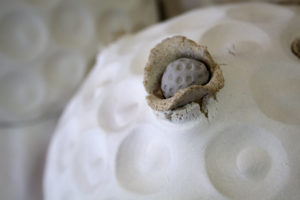
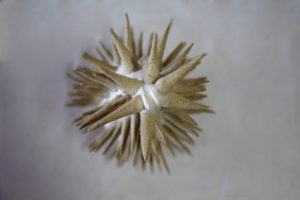
El material utilizado es el gres, en concreto la combinación de un gres de textura gruesa, como la chamota, y color tostado, y un gres de textura fina sin chamota o con chamota impalpable de un tono más blanco. Las piezas colgantes del polen se hacen mediante la técnica del paperclay con mayólica, para evitar que el peso de la nube sea un problema durante la instalación. El uso de esmalte, transparente y sin colorear, se deja sólo para potenciar y embellecer las piezas con más protagonismo, que en este caso serán los granos de polen. Aunque el polen real puede llegar a tener distintos colores, considero que no encajan con la línea estética de la obra y de la exposición colectiva en sí, por eso prefiero potenciar las texturas como vía del concepto y dejar todas las piezas del color propio de las arcillas usadas.
The material used is stoneware, specifically the combination of a coarse-textured stoneware, such as chamotte, and a tan color, and a fine-textured stoneware without chamotte or with impalpable chamotte of a whiter shade. The hanging pieces of pollen are made using the majolica paperclay technique, to avoid that the weight of the cloud is a problem during installation. The use of glaze, transparent and uncoloured, is left only to enhance and beautify the pieces with more prominence, the pollen grains. Although the real pollen can have different colors, I consider that they do not fit with the aesthetic line of the work and the collective exhibition itself, that is why I prefer to enhance the textures as a way of representing the concept and leave all the pieces the natural color of the used clays.
